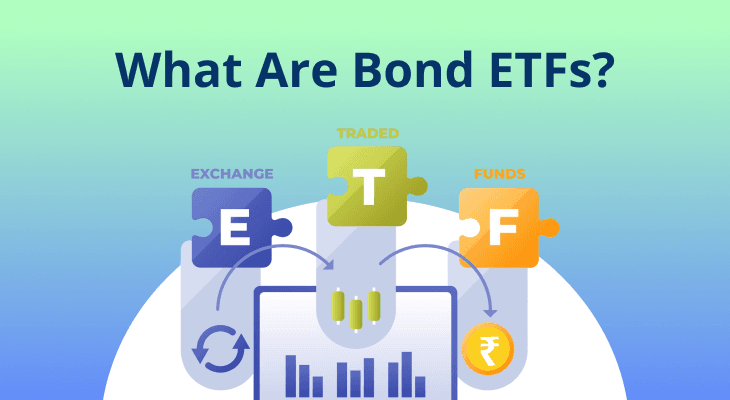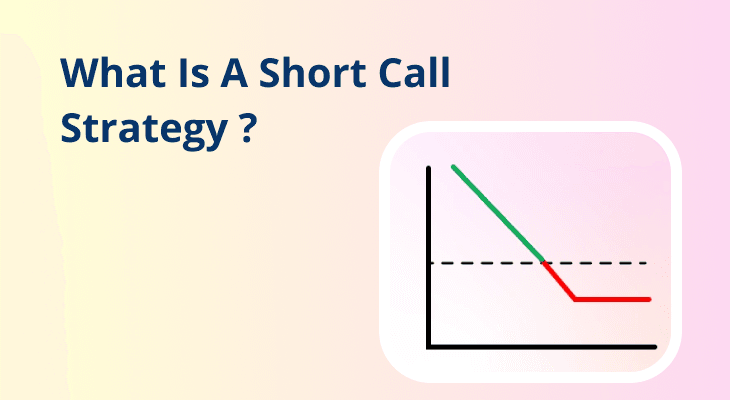
What Are Bond ETFs?
When people think of investing in bonds, they often imagine buying individual government securities or corporate debt instruments. While this traditional approach is still available to investors, they also have access to a much more flexible and accessible route to the bond market, through Bond Exchange-Traded Funds (Bond ETFs).
Bond ETFs combine the characteristics of bonds (that is, predictable income and relative safety) with the benefits of stock-like trading. They allow investors to gain exposure to a basket of bonds without having to buy them individually or worrying about their maturity dates. With their low cost, high liquidity, and transparent structure, bond ETFs are fast becoming a preferred option for both beginners and seasoned investors looking for fixed-income exposure.
This article takes you through everything you need to know about bond ETFs, from how they work and what types exist to the benefits, risks, and their suitability for different investor profiles.
What Is a Bond ETF?
Bond ETFs are exchange-traded funds which invest primarily in bonds or other debt instruments. Like other ETFs, bond ETFs are listed and traded on stock exchanges, which means they can be bought and sold during trading hours just like regular stocks.
The underlying assets in bond ETFs may include government bonds, corporate bonds, municipal bonds, or a mix of these instruments. The key feature that makes bond ETFs attractive is that they provide diversified exposure to fixed-income securities in a cost-efficient and liquid format.
Unlike investments in individual bonds (which requires large capital and detailed research) bond ETFs offer a hassle-free way to participate in the bond market with small ticket sizes.
How Do Bond ETFs Work?
Bond ETFs operate similarly to mutual funds, but with the added advantage of being listed on an exchange. The fund manager builds a portfolio of bonds based on a specific index or investment strategy. Investors then buy units of the ETF, gaining exposure to the entire bond portfolio rather than any individual bond.
Here’s how bond ETFs function in detail:
- Creation and redemption: Large institutional investors (called Authorised Participants) create or redeem ETF units by exchanging baskets of bonds with the fund in large quantities.
- Trading on exchanges: Once created, ETF units are listed on the stock exchange. Retail investors can sell or buy them at market prices throughout the trading day.
- Price movements: The prices of bond ETFs fluctuate during the day based on market demand and the net asset value (NAV) of the bonds held within the fund.
- Income distribution: Most bond ETFs distribute interest income monthly or quarterly, based on the interest received from the bonds held in the fund.
Because bond ETFs don’t hold bonds until maturity, they are subject to price volatility as interest rates and bond prices fluctuate.
Additional Read: ETF Vs Mutual Fund: Difference & Which is Better for Investment
Types Of Bond ETFs
Bond ETFs come in various forms based on the types of bonds they invest in, the maturity period, or credit risk. Some of the most popular categories include:
- Government bond ETFs: These invest primarily in bonds issued by the central or state government. In India, these are often referred to as G-Sec ETFs or Gov Bond ETFs. They are considered low-risk and suitable for conservative investors.
- Corporate bond ETFs: These funds hold bonds issued by highly rated corporations. While they carry slightly more risk than government bond ETFs, they also tend to offer better yields.
- Short-term bond ETFs: These ETFs focus on bonds with a short duration (typically less than 3 years). They are less sensitive to rate changes and are useful for capital preservation.
- Long-term bond ETFs: They invest in bonds with longer maturities (10 years or more). Long-term bond ETFs tend to offer higher yields but are more sensitive to interest rate movements.
- High-yield bond ETFs: Also called junk bond ETFs, they invest in lower credit rated bonds. They offer higher potential returns but also come with increased credit risk.
- Municipal bond ETFs: In markets like the US, municipal bond ETFs invest in those bonds that are issued by local governments. They often offer tax benefits on the income generated.
- Total bond market ETFs: These provide exposure to a mix of short-, medium-, and long-term bonds across various issuers. Total bond market ETFs are ideal for investors looking for broad diversification within a single fund.
Advantages Of Bond ETFs
Bond ETFs offer several key advantages over traditional bond investing and even over bond mutual funds. Here is why they appeal to a wide variety of investors:
- Liquidity: While individual bonds can be illiquid, bond ETFs trade on a stock exchange. This means investors can buy or sell them easily at prevailing market prices.
- Lower investment threshold: You can start investing in a bond ETF with just a few hundred rupees, unlike individual bonds that may require minimum lots or higher capital.
- Instant diversification: A single bond ETF may hold dozens or even hundreds of different bonds. This spreads your risk and protects your investment against default from any one issuer.
- Passive income: Bond ETFs provide regular income through interest collected from the constituent bonds. Most funds distribute this income monthly or quarterly.
- Transparent pricing: You can see the market price of a bond ETF in real time during trading hours, making it easier to track performance and make informed decisions.
- Cost efficiency: Bond ETFs typically have lower expense ratios than actively managed bond mutual funds. This means more of your returns stay in your pocket.
- Flexibility: You can buy or sell units at any time during the market day, unlike mutual funds where purchases or redemptions are based on end-of-day NAV.
Risks and Limitations
Despite their benefits, bond ETFs come with certain risks and trade-offs that investors should understand.
- Interest rate risk: Bond ETFs are sensitive to changes in interest rates. When interest rates rise, bond prices fall, and so does the value of the ETF.
- Credit risks: If the bonds held by the fund are downgraded or the issuer defaults, the ETF’s value could decline. This is especially relevant for high-yield bond ETFs.
- Liquidity risks: While ETFs are more liquid than individual bonds, certain ETFs that hold illiquid or niche bonds may face challenges during market stress.
- Tracking error: Some ETFs may not perfectly mirror the index they aim to track. This can be due to fees, market factors, or structural decisions made by the fund managers.
- No capital protection: Unlike fixed deposits or savings schemes, bond ETFs do not guarantee principal protection. Their value fluctuates based on market conditions.
Who Should Invest In Bond ETFs?
Bond ETFs are not just for advanced investors. In fact, they’re well-suited for a broad range of investor profiles:
- Beginner investors looking for low-risk exposure to markets, especially government bond ETFs.
- Retirees or income seekers who want a regular income but are willing to assume moderate risk.
- Risk-averse investors looking for alternatives to equity without completely exiting the market.
- Diversified portfolio builders trying to add a non-equity component to reduce overall portfolio volatility.
- Short-term goal planners who want capital safety and access to liquidity.
- Tax-conscious investors can hold these assets for the long run to benefit from capital gains treatment.
Bond ETFs vs Bond Mutual Funds
Though they may seem similar, there are important differences between bond ETFs and bond MFs:
Feature | Bond ETFs | Bond Mutual Funds |
|---|---|---|
Trading | Intraday on stock exchanges | Once daily at NAV |
Liquidity | High (during market hours) | Moderate |
Cost | Generally lower | Can be higher due to active management |
Transparency | Real-time price | End-of-day NAV |
Income Distribution | Often monthly | Often quarterly or semi-annually |
Minimum Investment | Very low | Varies by AMC, often higher |
Conclusion
Bond ETFs offer a modern, convenient, and cost-effective way to invest in the fixed-income market. They combine the benefits of diversification, liquidity, and transparency, which makes them an attractive option for those looking to earn steady income or reduce volatility in their overall portfolio.
Whether you're planning for short-term financial needs, looking to generate passive income, or trying to balance your equity-heavy investments, bond ETFs can be a valuable addition to your financial strategy.
However, like any investment, they come with their own set of risks, and it's essential to choose the right type of bond ETF based on your goals, risk appetite, and investment horizon. If you're not sure where to start, consult a financial advisor or begin with government bond ETFs for safer exposure.
Additional Read: What Are Government Bonds & How Do They Work?
FAQ
What is a Bond ETF?
A bond ETF is an exchange-traded fund that invests in a basket of bonds, such as government securities, corporate bonds, or municipal bonds. It trades on stock exchanges like a stock.
Are bond ETFs safe?
Bond ETFs are generally considered safer than equity ETFs, especially those that invest in government or investment-grade bonds. However, they still carry interest rate and credit risks.
How are bond ETFs taxed in India?
Bond ETFs are taxed like debt funds – that is, all gains are taxed at your slab rate irrespective of your holding period. However, if you had purchased these instruments before 31/03/2023, gains from holdings less than 2 years old are added to your income and taxed at slab rates, whereas the gains from holdings over 2 years are taxed at 12.5%.
How do bond ETFs generate income?
Bond ETFs earn interest from the bonds they hold, and distribute this income regularly to investors, usually monthly or quarterly.
Can I lose money in bond ETFs?
Yes. While bond ETFs are generally safer, their value can fall if interest rates rise or if bonds in the portfolio default. They do not guarantee capital protection.
How do I buy a bond ETF in India?
You can invest in bond ETFs through a demat and trading account, using any equity trading platform or brokerage service that offers ETF access.


